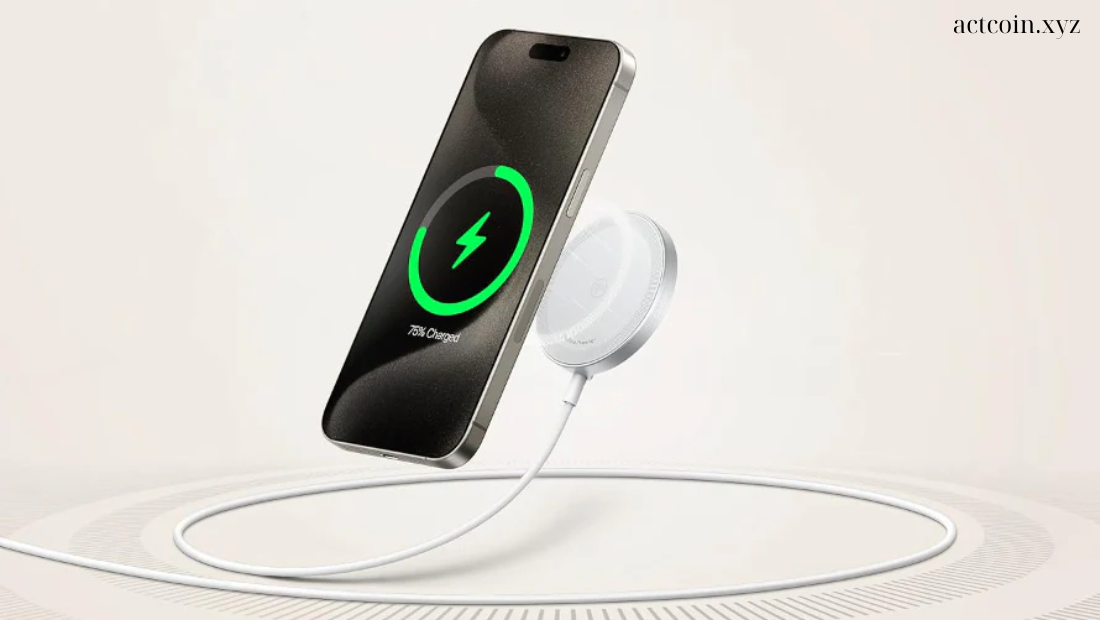In an age where convenience reigns supreme, Qi wireless chargers have emerged as a go-to solution for powering up our devices without the hassle of tangled cords and connectors. This guide will delve into everything you need to know about Qi wireless chargers, including how they work, their benefits, compatibility, and tips for choosing the right charger for your needs.

What is Qi Wireless Charging?
Qi (pronounced “chee”) is a wireless charging standard developed by the Wireless Power Consortium (WPC). It allows for the transfer of power between a charging pad and compatible devices using electromagnetic induction. This means that you can charge your smartphone, tablet, or other Qi-enabled devices simply by placing them on a charging pad—no cables needed!
How Does Qi Wireless Charging Work?
- Inductive Charging: Qi charging operates on the principle of inductive charging, where two coils (one in the charger and one in the device) create an electromagnetic field. When the device is placed on the charger, energy is transferred between the coils to charge the device’s battery.
- Power Transmission: The charging pad emits an electromagnetic field that the receiving coil in the device captures. This energy is then converted back into electrical energy to charge the device.
- Alignment: For optimal charging, the device must be aligned correctly with the charging pad. Many chargers use guides or pads to help with proper alignment.
Benefits of Using Qi Wireless Chargers
- Convenience: The most significant advantage of Qi wireless chargers is their convenience. Simply place your device on the charging pad, and it starts charging—no plugging and unplugging of cables required.
- Reduced Wear and Tear: Since there are no cables to connect, you minimize wear and tear on the device’s charging port, extending its lifespan.
- Universal Compatibility: Many smartphones, tablets, and accessories support Qi charging. This means you can use the same charger for multiple devices.
- Clutter-Free Charging: Wireless chargers help reduce cable clutter, keeping your workspace or bedside neat and organized.
- Smart Charging Technology: Most Qi chargers feature smart charging technology, which adjusts the power output based on the device’s needs. This ensures optimal charging speed and protects the device’s battery.
Compatibility
Before purchasing a Qi wireless charger, ensure that your device supports Qi charging. Most modern smartphones from brands like Apple, Samsung, Google, and others come with built-in Qi compatibility. Additionally, many accessories like smartwatches and earbuds also support Qi charging.
Checking Compatibility
- Device Specifications: Check your device’s specifications or user manual to confirm Qi compatibility.
- Manufacturer’s Website: Visit the manufacturer’s website for updated information on wireless charging capabilities.
- Qi Certification: Look for the Qi logo on your device packaging or the device itself.
Choosing the Right Qi Wireless Charger
With various Qi chargers on the market, here are some key factors to consider when making your choice:
- Charging Speed: Qi chargers come in different power outputs. Standard chargers typically provide 5W, while fast chargers can offer 10W or more. Check your device’s maximum charging speed and select a charger that matches or exceeds it.
- Design and Build Quality: Choose a charger that fits your aesthetic preferences and complements your workspace. Some chargers come with additional features like built-in fans for cooling or non-slip surfaces to keep your device secure.
- Portability: If you plan to use your charger on the go, consider a lightweight and compact design that’s easy to carry.
- Multiple Device Charging: Some chargers are designed to charge multiple devices simultaneously. If you have several Qi-enabled devices, this can be a convenient option.
- Safety Features: Look for chargers with built-in safety features like overcharge protection, temperature control, and foreign object detection to ensure safe charging.
- Brand Reputation: Opt for reputable brands that are known for their quality and customer support. Reading customer reviews can also provide insights into performance and reliability.
Tips for Using Qi Wireless Chargers
- Remove Cases: Some cases may interfere with wireless charging. If you experience charging issues, consider removing the case or using a case specifically designed for wireless charging.
- Align Properly: Ensure your device is correctly aligned with the charger for optimal charging. Many chargers have indicators to help you position the device correctly.
- Keep It Clean: Dust and debris can affect charging efficiency. Regularly clean the charging pad and the back of your device to maintain optimal performance.
- Monitor Heat: While some heat is normal during wireless charging, excessive heat can damage the device’s battery. If you notice your device overheating, consider using a charger with cooling features or a more powerful charger.
- Use the Right Power Adapter: To achieve the best charging speed, use a compatible power adapter that meets the charger’s specifications.
Conclusion
Qi wireless chargers are revolutionizing the way we power our devices, offering convenience, compatibility, and a clutter-free charging experience. By understanding how they work and what to look for when selecting a charger, you can enhance your charging experience and keep your devices powered up effortlessly. With the right Qi charger, you can enjoy the freedom of wireless charging and simplify your daily routine. Whether you’re at home, in the office, or on the go, Qi wireless chargers make staying powered up easier than ever.
